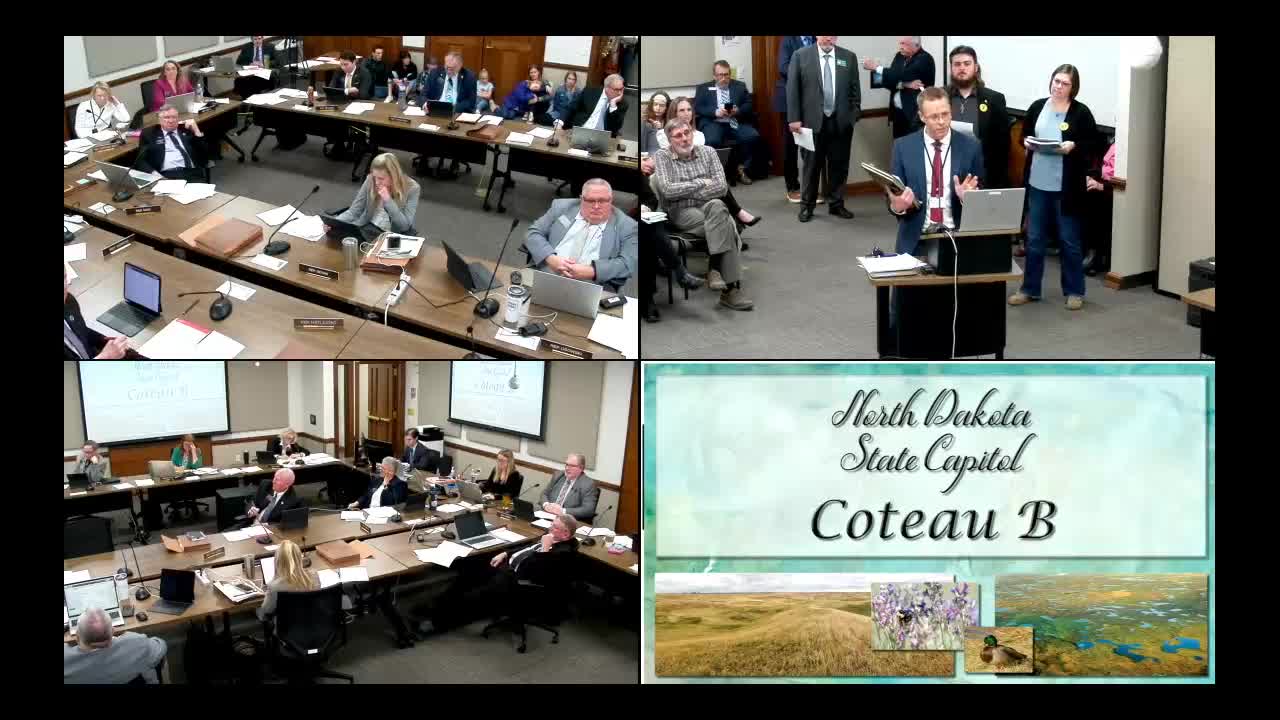North Dakota debates impact of education savings accounts on tuition and school choice
March 18, 2025 | Education, House of Representatives, Legislative, North Dakota
This article was created by AI summarizing key points discussed. AI makes mistakes, so for full details and context, please refer to the video of the full meeting. Please report any errors so we can fix them. Report an error »

The North Dakota House Education Committee convened on March 18, 2025, to discuss Senate Bill 2400, which proposes the establishment of Education Savings Accounts (ESAs) for public education students. This bill is notable as it is the first of its kind in the nation to specifically include public school students, raising questions about its implications for school funding and educational choice.
During the meeting, a key point of contention was the bill's potential to create a government-regulated marketplace for educational resources. Critics expressed concerns about the bureaucratic process involved in approving educational materials, suggesting that it could hinder timely access for students. One representative emphasized that the bill should be viewed as a universal subsidy for schools rather than a true education savings account, arguing that it does not enhance school choice but rather shifts the financial burden onto taxpayers.
The discussion also included comparisons to similar programs in other states, particularly West Virginia, where ESA programs have historically expanded over time. A representative warned that if North Dakota's program were to be implemented, it would likely grow in scope and cost, potentially leading to increased financial strain on the state's budget.
In opposition to the bill, Ginger Thomas, a homeschool advocate, highlighted the unintended consequences observed in other states that have adopted ESAs. She cited studies indicating significant tuition increases in private schools following the implementation of such programs, with some schools raising fees by as much as 60%. This trend raises concerns about affordability and accessibility for families seeking educational alternatives.
The committee's discussions reflect a broader debate about the future of education funding in North Dakota, with implications for both public and private schooling options. As the bill moves forward, stakeholders will continue to assess its potential impact on the state's educational landscape.
During the meeting, a key point of contention was the bill's potential to create a government-regulated marketplace for educational resources. Critics expressed concerns about the bureaucratic process involved in approving educational materials, suggesting that it could hinder timely access for students. One representative emphasized that the bill should be viewed as a universal subsidy for schools rather than a true education savings account, arguing that it does not enhance school choice but rather shifts the financial burden onto taxpayers.
The discussion also included comparisons to similar programs in other states, particularly West Virginia, where ESA programs have historically expanded over time. A representative warned that if North Dakota's program were to be implemented, it would likely grow in scope and cost, potentially leading to increased financial strain on the state's budget.
In opposition to the bill, Ginger Thomas, a homeschool advocate, highlighted the unintended consequences observed in other states that have adopted ESAs. She cited studies indicating significant tuition increases in private schools following the implementation of such programs, with some schools raising fees by as much as 60%. This trend raises concerns about affordability and accessibility for families seeking educational alternatives.
The committee's discussions reflect a broader debate about the future of education funding in North Dakota, with implications for both public and private schooling options. As the bill moves forward, stakeholders will continue to assess its potential impact on the state's educational landscape.
View full meeting
This article is based on a recent meeting—watch the full video and explore the complete transcript for deeper insights into the discussion.
View full meeting
